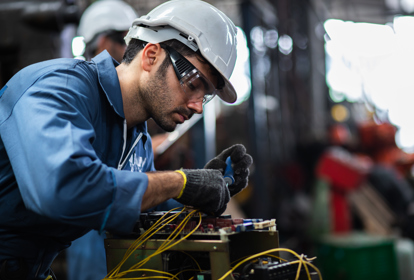Industry 4.0 technologies, such as Industrial IoT (Internet of Things) sensors, which collect the data automatically, are laying the foundation for the introduction of analytics and Artificial Intelligence (AI), which can warn of potential failures long before they may happen.
While an increasing number of manufacturers are pursuing this path, the reality for many small and medium-sized enterprises is that they are not yet ready to capture this valuable information from their equipment, and risk wasting time and money investing in the wrong technology, in the wrong way, trying to catch up with the pack.
For the last two and a half years the Made Smarter’s Adoption programme in the North West has engaged with hundreds of SME manufacturers, assessing their digital capabilities and readiness. We have found that many are still reliant on reactive and preventative maintenance, and manually monitor equipment.
The justification is that not spending time, money and labour on a machine that isn’t broken can be advantageous in the short term. But a fail and fix strategy is not sustainable in the long term. It puts a business at risk of the worst case scenario, where a machine stops working and there is a delay on getting parts for the repair, halting production, increasing lead times and reducing profits.
A planned maintenance strategy, with schedules for part changes, introduces an element of proactivity and is cheaper than the long term costs associated with reactive maintenance, but it relies on human intervention from the shop floor, is manually recorded and managed, and doesn’t overcome the risk of a serious failure developing before the next inspection.
The solution to these traditional approaches is predictive maintenance, where digital removes the human element in the collection, storage and analysis of data. But the journey to predictive maintenance usually starts at having a maintenance schedule, basic data collection, and analytics already in place. Once a company can identify that this solution is not sufficient anymore then it is time to reach out for specialist advice to scope the predictive element of their maintenance practice and avoid ballooning project costs.
In all our conversations with manufacturers, we advocate a holistic approach to digital transformation where every decision is qualified and quantified. This can be broken down into four key steps.



